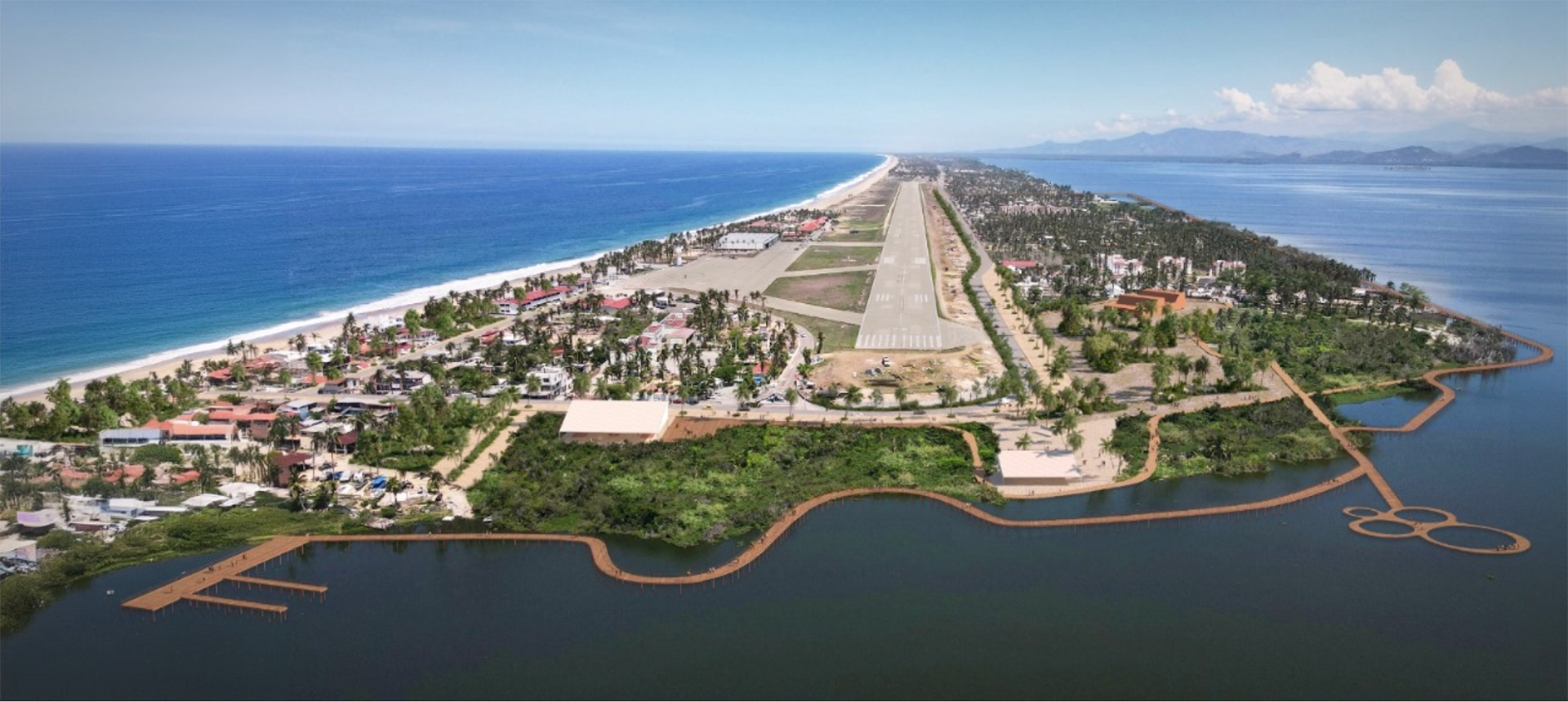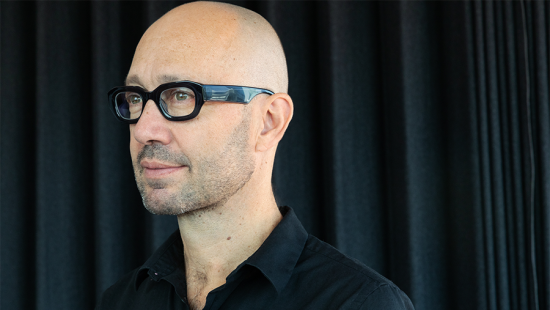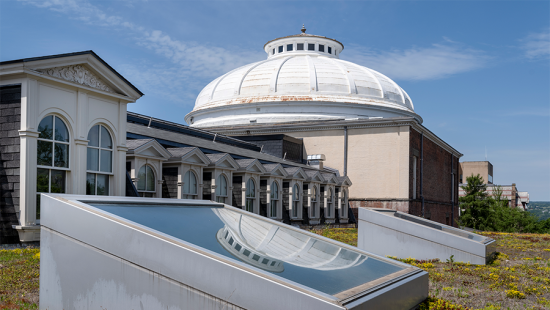This summer, the College of Architecture, Art, and Planning (AAP) welcomed architect and urban planner Jose Castillo to Cornell as Professor and Chair of the Department of Architecture. Castillo, who is also a cofounder of the firm a|911 in Mexico City, will deliver a public lecture on October 16 at 5:30 p.m. in Milstein Hall with an available Zoom option. In advance of that talk, he shared insights into his professional trajectory, transformative experiences, and philosophical approach to architecture practice and pedagogy.
Molly Sheridan: I want to begin by going back to your own student days. Was there a learning moment or experience that had a particularly deep impact on your development, something that you still carry now as an educator yourself?
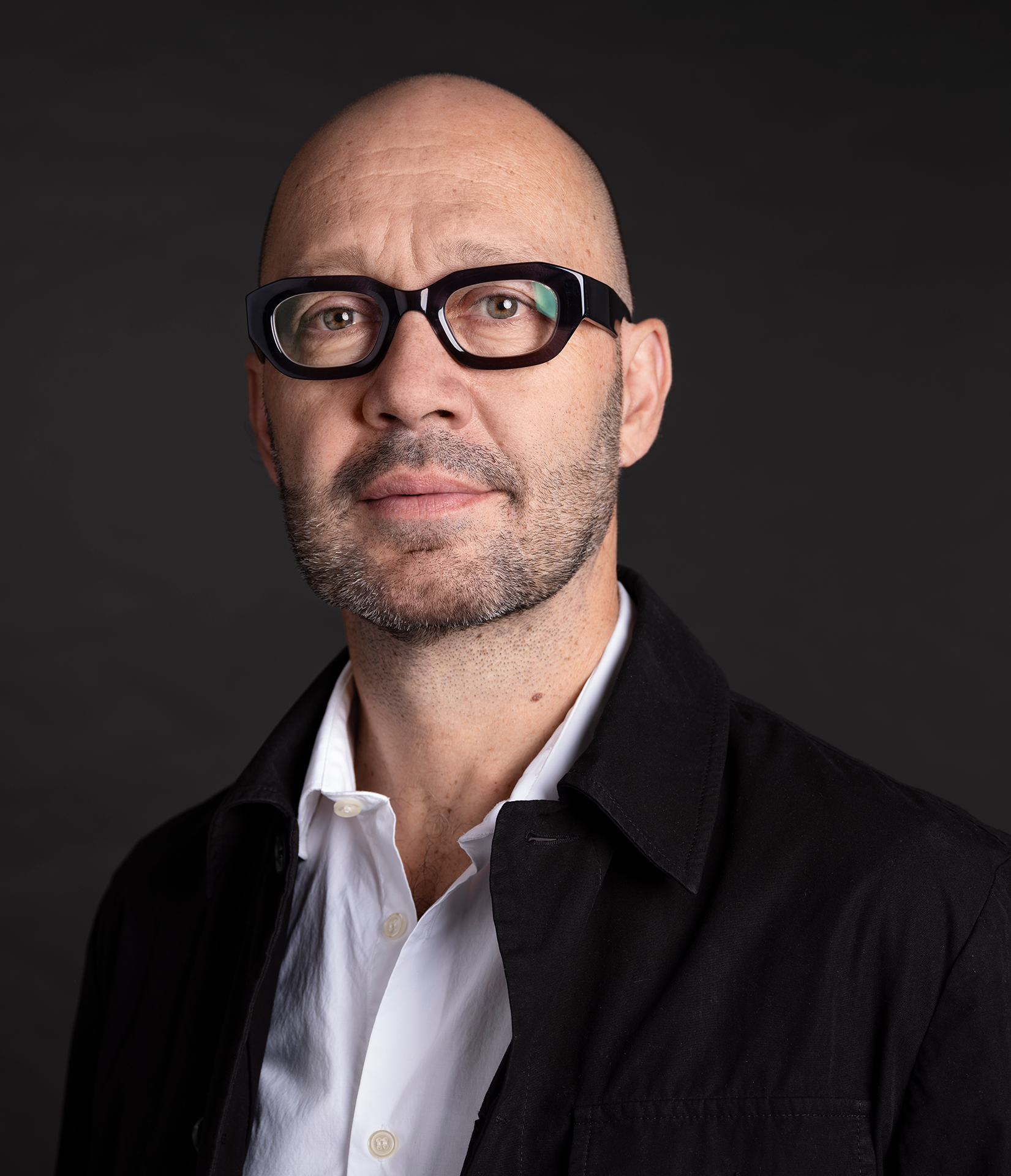
Jose Castillo. Anson Wigner / AAP
Jose Castillo: Perhaps there's a post-rationalization of tiny things that happened over a 40-year span that begin to connect to why I'm here. In 1988, during the first semester of my undergraduate architectural education in Mexico, our first project was to do very serious analytical work on a housing project in Marburg, Germany, by Oswald Matthias Ungers. Ungers was a crucial member of the faculty at Cornell in the 1970s. I mention this anecdote because later on, during the first semester of my master's education, I was lucky to have Rem Koolhaas as an instructor at the GSD. Koolhaas had spent some time at Cornell as a teaching fellow with Ungers, and of course, now we spend a lot of our time in Milstein Hall, designed by Koolhaas. I think that architecture and our work as architects is about making some form of connection between our own experiences and the world outside. How do certain experiences, whether personal, anecdotal, or communal, begin to create a sense of the worlds we see, of the worlds we live in, of the worlds we transform?
For me, it's not a sign or anything mystical. But I start with that because I do believe in ways of connecting our own histories to our own futures; our own lessons and experiences to the way we do prospective work and imagine deeper or more successful engagements. The Koolhaas experience was really foundational because he had already written Delirious New York, but he was about to write S, M, L, XL, and it was at a stage in which his interest began to expand from architecture to urban issues. That really triggered a particular interest in me. I recognize that Rem's footprint was fundamental in that regard.
MS: Fast-forward to the world and educational environment that surrounds us today. What topics and questions are now essential for you to share and explore with your own students?
JC: I think I've always been preoccupied with the concerns we have as a discipline and how they connect to the larger world, both as a social and political project. Architecture has not only the capacity but the responsibility to be effective on its own terms by engaging form, engaging materiality, addressing its own disciplinary problems, but also connecting to the big questions of our time.
For all its creativity, architecture is still a violent act: To happen, it requires the destruction of, or at least the transformation of environments, to build bricks, to mine gypsum, to move lumber, to make steel, to get stone from a quarry. We need to reckon with this level of violence — or, let's say, accelerated transformation — and to at least create a culture of awareness of what the act of making architecture represents. Rather than shy away from those implications, we have to reclaim and reimagine what makes this discipline unique, relevant, and meaningful in its own terms, but we also have to understand its ripple effects vis-à-vis the world at large. I consider myself an optimist in that regard, convinced that embedding architecture with the social and the political gives us a more enhanced power to become agents of change.

Cetram San Lázaro (2023), a|911, Mexico City. image / Sandra Pereznieto
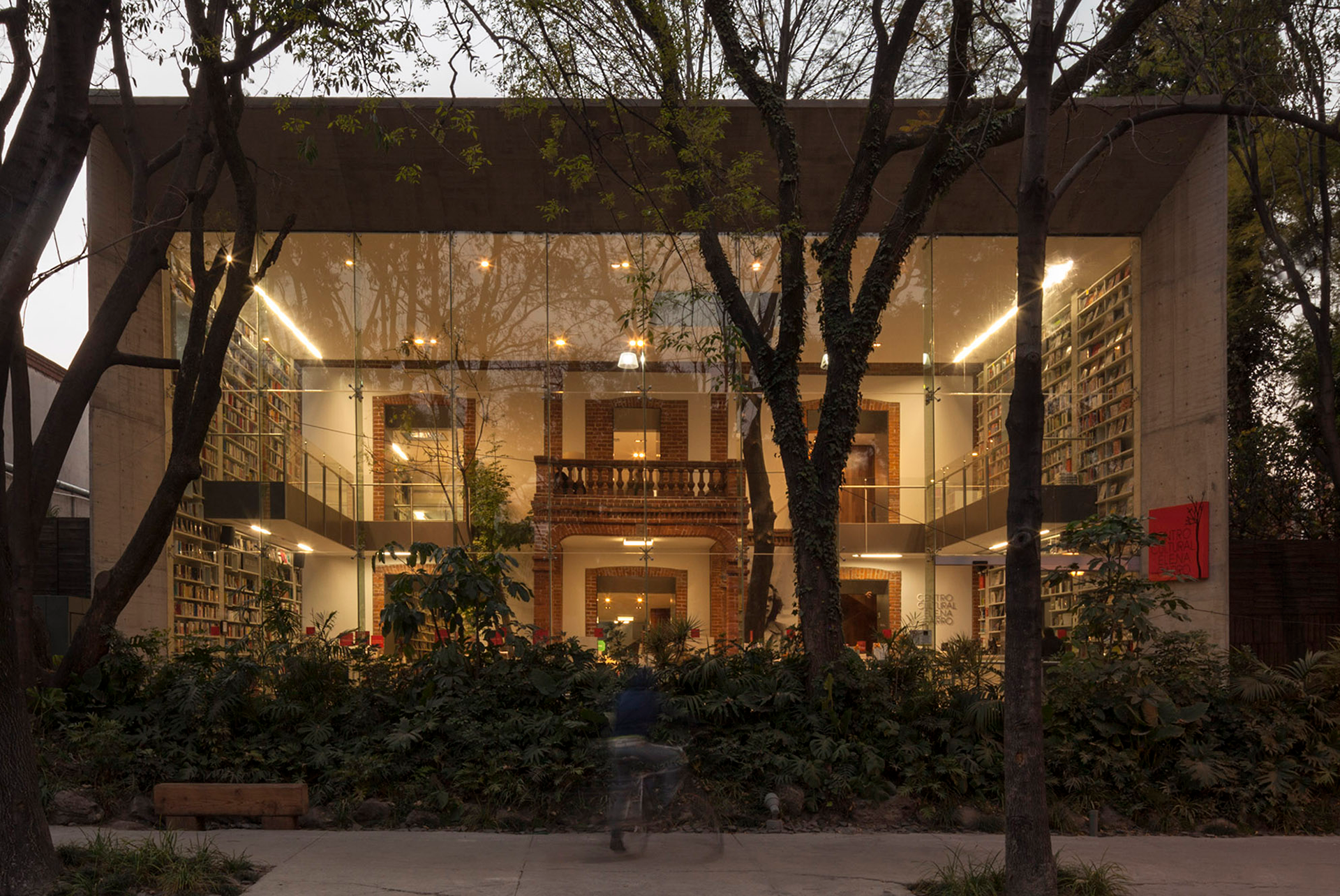
Elena Garro Cultural Center (2012), a|911 with Fernanda Canales, Mexico City. image / Sandra Pereznieto
MS: How do you find yourself engaging your students on these issues?
JC: It's always a two-way road between the ideas, biases, and experiences that we as instructors bring to the classroom or the studio, and the experiences, ideas, and biases that come from the student body. I'm really concerned with that space in between — between the plurality of the students and the idea that pedagogy is a space of possibilities. When you have an expanded cohort of people with different backgrounds, conversations allow for cross-pollination of knowledge. I've seen that here at AAP. Studios are not cookie-cutter nor only concerned with one way of presenting, representing, and working. It's not about singular methods but about multiplicities. I'm keen to keep fostering that and working and learning from faculty.
MS: Do you hold any fundamental design principles or philosophies that you find guide your own work across the years?
JC: For us, the work of architecture exists on a double axis, one in relation to the precedent and another to what we're seeing as new contingencies, if I may use that word. How does the work one does today relate to the work you did two years ago or 40 years ago? How does that work relate to the problems of the practice? How does it relate to the work that your colleagues are doing, to the challenges of our time, to the political, demographic, or social reality? Our work at [the architecture and urban planning office a|911] has been connected to those issues. What has remained over the past 20 years? A deep interest in connecting research to practice and connecting the physical with the social. How do applied research and the methods of inquiry relate to the act of giving form to buildings, landscapes, cities, plans, and visions?
Another is a preoccupation with the city as understood in both its social performance and its environmental performance. Who is the city for? Who are the winners and the losers when we make decisions about the city? Who is being excluded from city decisions? And how does architecture empower or disenfranchise certain populations? Every act of architecture, every act of planning has environmental consequences. I do think that that kind of awareness requires adaptation to new voices, new knowledge, to different takes on the problems of how we design, how we plan, and how we make choices for our work.
You never know where new knowledge is going to come from, whether it's going to come through the window or the back door or through this other wall. Enhanced awareness is fundamental to, as the expression goes, read the room. We need to read the world! We need to understand what's happening around us in order to connect it to the work we have continuously done.
×
Pilares Quetzálcoatl (2022), a|911, Mexico City. image / Sandra Pereznieto
Pilares Valentín Gómez Farías (2022), a|911, Mexico City. image / Onnis Luque
Platah Pavilion (2015), a|911 with AECOM, Hidalgo, Mexico. image / Jaime Navarro
Pilares Quetzálcoatl (2022), a|911, Mexico City. image / Sandra Pereznieto
MS: That dovetails with my next question, which is about living and working in Mexico, specifically. Has that shaped the work in any particular ways?
JC: Knowledge is always place-based and experience-based, and the fact that [Saidee Springall, codirector of a|911, and I] have lived most of our lives in Mexico City, learned architecture and practiced there, is really a big driver in the attitudes we have toward architecture and planning at large. In spite of having a "long-history," being founded by the Aztecs in 1326 and conquered by the Spanish in 1521, it is a city that grew dramatically in the 20th century. So, there are challenges and processes of transformation and they relate to modernity differently. Mexico City is a palimpsest of those different histories. In addition, it's not only about the cultural, architectural, and urban history, but about what was happening at the margins of those histories as well. Half of Mexico City was developed in informal ways, not unlike many other cities in the Global South. This actually shaped not only my doctoral dissertation when I returned to the GSD, but it shaped my sense that architecture, in spite of sometimes feeling like an all-compassing, controlling discipline, does not control everything about how the environment gets shaped. There are multiplicities of ways, techniques, methods, and actors which are, in their own way, architects and planners of the city. That kind of acknowledgment really shapes our attitudes about what to try to control, what not to control, and where architecture and planning can be most effective and how to develop the techniques to communicate that to multiple stakeholders.
MS: Is there a book or an object that you like to keep close at hand when you're working?
JC: I'm missing my books. Because of the nature of my teaching abroad and work in Mexico over the past 15 years, I've become a global nomad and try to travel in the lightest possible fashion, so the only books I brought are cookbooks. But I do miss the sense of objects. In our house in Mexico, we have a collection of wooden spoons. Objects have a way of connecting you to people, places, and previous experiences. So when you accumulate certain objects, there's also a production of knowledge.
I think transforming our home in Ithaca and this office at Sibley will require time and objects. As William James said, "There are no things but things in the making." There are no offices but offices in the making. To transform and adjust to this office, it will probably take time to make this, paraphrasing Virginia Woolf, a room of one's own. I'm still discovering which are those objects that will connect those old histories to the new histories that are being made. Let's talk in one year when this begins to become more of my office and less Sibley 139.
Attend the Lecture
Jose Castillo: a|911 — Concepts of a Plan
Wednesday, October 16 at 5:30 p.m.
Abby and Howard Milstein Auditorium
Milstein Hall
Zoom option available
Full Details + Register to Attend



